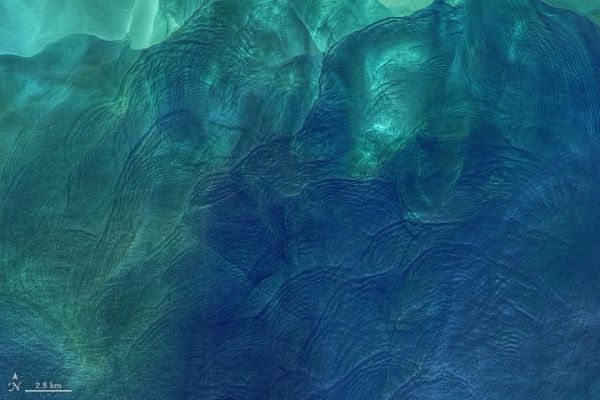This Image of the Day is the answer to the February 2020 puzzler.
“The ripplings are seen in calm weather approaching from a distance, and in the night their noise is heard a considerable time before they come near. They beat against the sides of a ship with great violence, and pass on, the spray sometimes coming on deck; and by carrying out oceanographic measurements from a ship, a small boat could not always resist the turbulence of these remarkable ripplings.”
So wrote oceanographer Matthew Fontaine Maury in a 19th Century description of a passage through the Andaman Sea, a section of the eastern Indian Ocean near Thailand and Burma (Myanmar). The strange phenomena he described as ripplings are now known to scientists as internal waves, or solitons. Oceanographers began studying them from ships in the 1960s, and the modern era of satellites has made it possible to see them on a grand scale.
Internal waves form because the ocean is layered. Deep water tends to be colder, denser, and saltier, while shallower water is often warmer, lighter, and fresher. The differences in density and salinity cause layers of the ocean to behave like different fluids. When tides, currents, gravity, and Earth’s rotation move these different water masses over seafloor formations (such as ridges or canyons), they create waves within the sea.
Continue reading at NASA Earth Observatory
Image via NASA Earth Observatory


